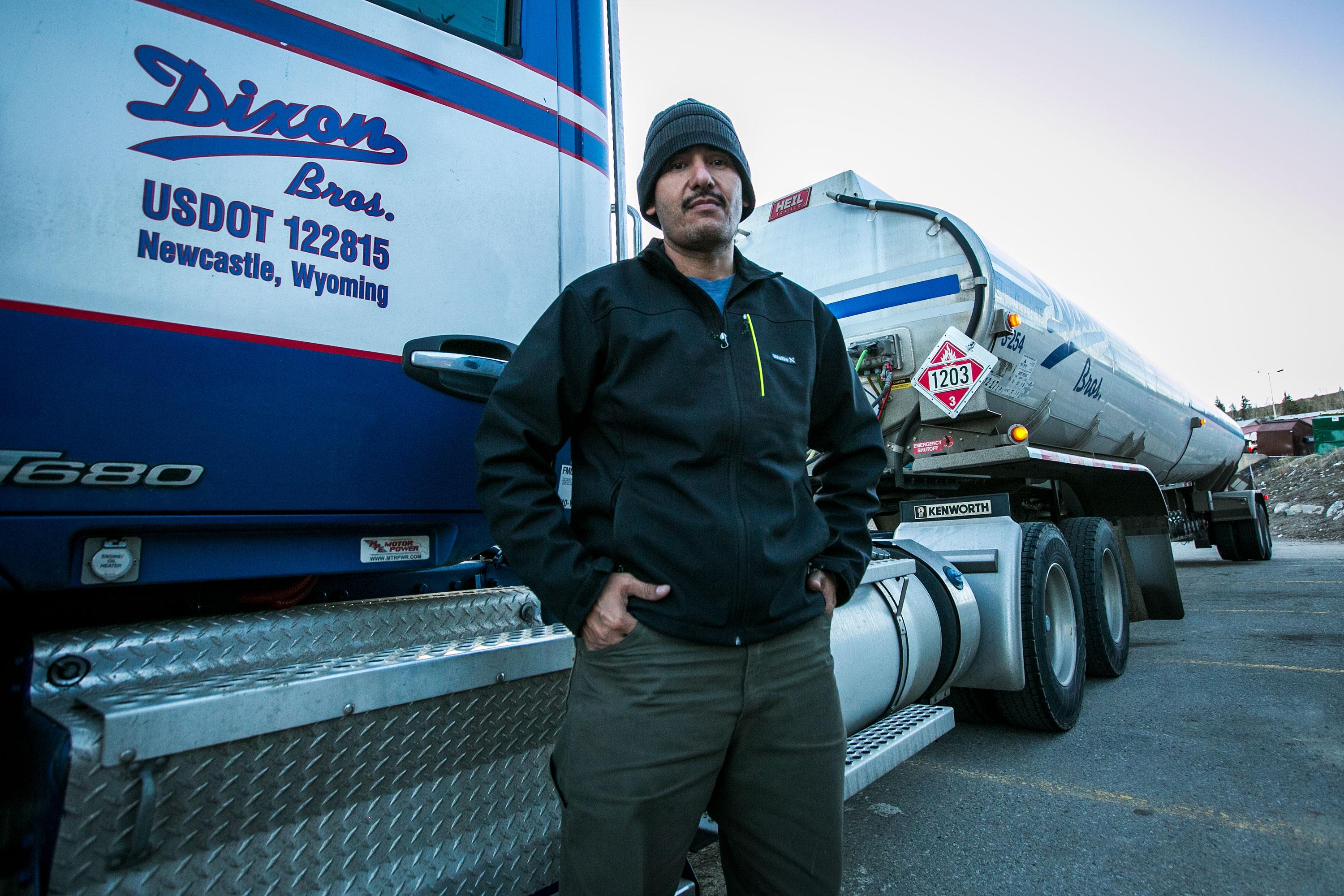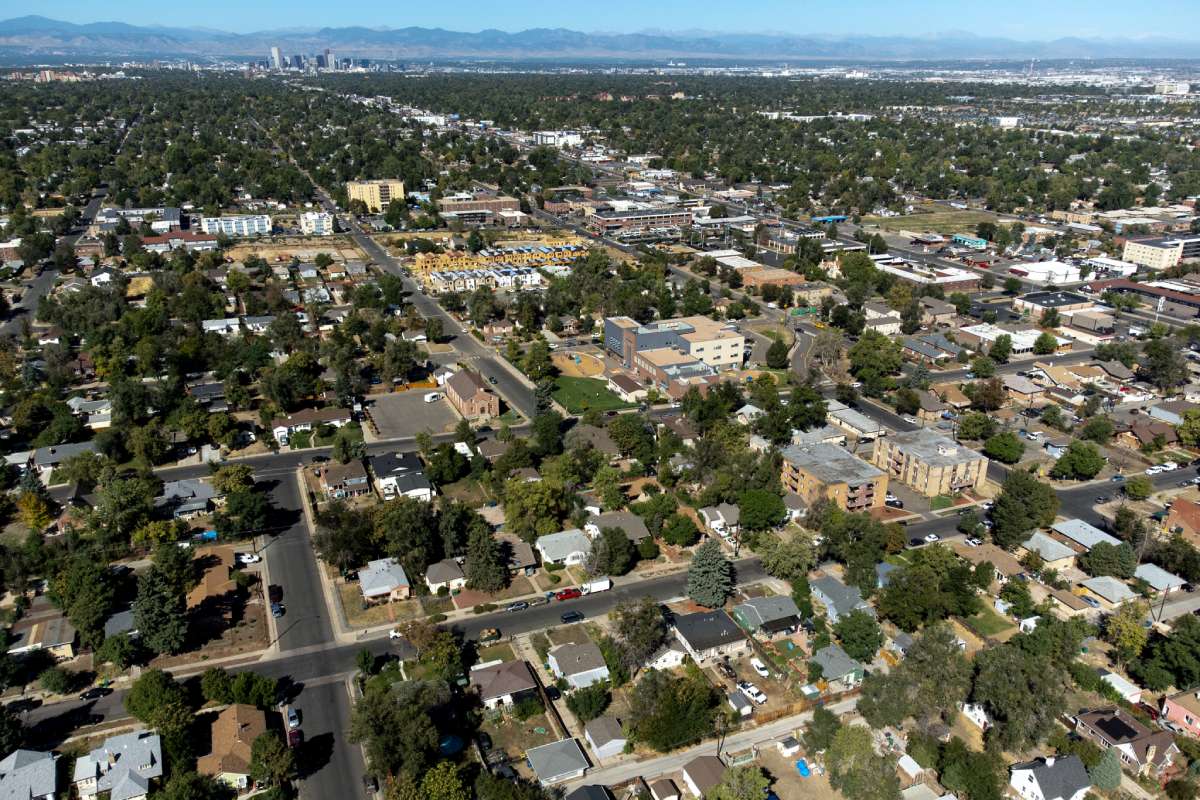
Before you’ve rolled out of bed, Jesus Torres has probably driven Loveland Pass — twice. The hazmat tanker truck driver for Dixon Bros., a Wyoming-based trucking company with offices in Denver, wakes up for work at 1 a.m. and is on the road well before dawn.
On a crisp, sunny day earlier in the week, Torres drove the stretch from Silverthorne to Denver, the last leg of his trek from the metro to Summit County and back, with one reporter in the cab. The idea was to see first-hand the main artery of his travels — Interstate 70 — from the trucker’s perspective.
In recent weeks, that stretch has drawn scrutiny, after a runaway big rig caused a deadly pile-up in April on I-70 in Jefferson County. The trucker, Rogel Lazaro Aguilera-Mederos, was allegedly going more than 80 miles an hour through the foothills, before his truck barreled into traffic and caused four fatalities.

He faces more than 40 charges related to the crash, including four counts of vehicular homicide.
Torres said truckers in the area are fixated on the accident and have discussed what could have caused it. The stretch of I-70 from Silverthorne to Denver is particularly treacherous, with tight turns, steep climbs and sharp descents. Torres estimates he’s driven it at least a couple thousand times in the last year alone and worries about the training other drivers receive before facing it.
“When I started driving, I explained to my boss that I didn’t have any experience driving semis in the mountains. And they told me, ‘We will train you,’” Torres said.
He’s learned the ins and outs of mountain driving since then, including mastering the use of engine, or jake, braking. That can help regulate speed and reduce wear and tear on service brakes.
“It took about a month for me to learn the basics,” he said. “And even after that, it took a while. I’d say at least a year before I felt comfortable.”
The driver in the deadly I-70 crash worked for a Texas company. His lawyer, Rob Corry, couldn’t confirm to reporters if Aguilera-Mederos had experience driving on steep grades, although he did have experience driving in Colorado.
I-70’s extreme weather, high elevation and steep grades make for more complicated driving than other parts of the U.S. interstate system.
“Colorado is unique in that way,” said Colorado Department of Transportation spokeswoman Tama Rollison. She said it’s important for out-of-state motorists, including truckers, to get familiar with Colorado’s terrain before they drive here.

“Sometimes the steep grade doesn’t seem to be steep, especially as you’re heading back on the eastbound side of I-70 coming down the mountains into Denver,” she said
Torres said that stretch — from Genesee to C-470 — is the most difficult set of miles to drive on the way to Denver. It’s also where Aguilera-Mederos was seen picking up speed.
“You should know that you’ve gotta slow down here,” he said as we passed signs warning of steep grades and sharp curves.
Torres worries some truck drivers don’t pay attention to those signs.
“I do believe that some people don’t really get the picture of it,” he said. “Especially with semis or drivers from out of state, that have never been in this area before.”
There are other incentives for drivers to drive aggressively on that stretch: He’s paid by the hour, but most drivers — especially long-haul truckers — are paid by how many miles they drive, or how many loads they deliver. And after chugging uphill, the chance to go downhill quickly can be tempting.
“They’re trying to make up time,” he said. “You take this chance to go a little bit faster. That’s just the way it is. And you’ve got signs left and right, 45 miles an hour. And a lot of guys just don’t follow the rules.”
And if a trucker gets out of control, they may hesitate to use one of the runaway truck ramps. It can cost thousands of dollars to tow out a truck as well as precious minutes or hours.
Torres said he’s passed no judgment on the driver in the I-70 crash. An investigation is underway, but until that’s published many facts aren’t known yet. And, Torres said, there are just too many things that could’ve gone wrong for anyone. In the end, it’s just a perilous stretch of road.
“It could happen to anybody. It could happen to a guy from New York, from California,” he said. “It could happen to me.”









